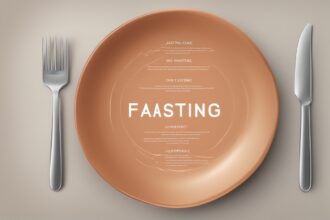Welcome to the world of fasting, where ancient traditions meet modern science to promote health, wellness, and mindfulness! If you’re curious about fasting styles and how they can fit into your lifestyle, you’ve come to the right place. fasting isn’t just about skipping meals—it’s a deliberate practice that can enhance mental clarity, support weight management, and even improve metabolic health. In this comprehensive guide, we’ll dive into the most popular types of fasting, explore their benefits with scientific insights, and share practical tips to help you get started. Whether you’re a beginner or a seasoned faster, there’s a fasting method for everyone. Let’s explore the diverse approaches to fasting and find the one that resonates with you!
What Are Fasting Styles and Why Do They Matter?
Fasting styles refer to the different methods and patterns of abstaining from food or specific nutrients for a set period. These approaches vary in duration, intensity, and purpose, catering to goals like weight loss, spiritual growth, or detoxification. The beauty of fasting styles lies in their flexibility—there’s no one-size-fits-all. Research shows that fasting can trigger autophagy, a cellular cleanup process, and improve insulin sensitivity, which are key to longevity and disease prevention. Understanding the different types of fasting helps you choose a method that aligns with your health goals and daily routine. So, let’s break down the most common fasting techniques and see what makes each unique.
Intermittent Fasting: The Most Popular of Fasting Styles
Intermittent fasting (IF) tops the list of fasting styles due to its simplicity and adaptability. This method cycles between periods of eating and fasting, with no strict rules on what to eat—only when. Common IF protocols include the 16/8 method (fast for 16 hours, eat during an 8-hour window) and the 5:2 approach (eat normally for 5 days, restrict calories to 500–600 on 2 days). Studies, such as those published in the New England Journal of Medicine, suggest IF can aid weight loss, reduce inflammation, and improve heart health. It’s perfect for beginners because it doesn’t require drastic changes overnight. Want to try it? Start with a 12/12 schedule to ease into longer fasting windows.
- Start Small: Begin with a shorter fasting window, like 12 hours, to let your body adjust.
- Stay Hydrated: Drink plenty of water during fasting hours to curb hunger.
- Plan Meals: Prepare nutrient-dense meals for your eating window to avoid overeating.
- Listen to Your Body: If you feel dizzy or weak, break the fast and consult a professional.
Water Fasting: A Deep Detox Approach
Water fasting is one of the more intense fasting styles, involving complete abstinence from food and consuming only water for a set period, typically 24–72 hours or longer under medical supervision. This method is often used for detoxification and resetting the digestive system. Research indicates that water fasting may lower blood pressure and promote autophagy, though evidence is limited and risks like nutrient deficiencies exist. It’s not for everyone—especially those with medical conditions. If you’re considering this type of fasting, consult a healthcare provider first. Short water fasts of 24 hours can be a good trial run for experienced fasters.
Time-Restricted Eating: A Subtle Fasting Style
Time-restricted eating (TRE) is a gentler cousin of intermittent fasting, focusing on limiting your daily eating window to 6–10 hours. Unlike other fasting methods, TRE emphasizes aligning meals with your body’s circadian rhythm, often encouraging eating earlier in the day. A 2021 study in Cell Metabolism found that TRE can improve metabolic markers like blood sugar control, even without calorie restriction. It’s ideal for those who want structure without extreme fasting durations. To make TRE work, try finishing your last meal by 6 PM and delaying breakfast until 8 AM or later.
Religious and Spiritual Fasting: Beyond Physical Health
Many fasting styles are rooted in spiritual or religious traditions, such as Ramadan for Muslims, Lent for Christians, or Yom Kippur for Jews. These fasts often combine food restrictions with prayer and reflection, fostering mindfulness and discipline. For instance, during Ramadan, individuals fast from dawn to sunset, abstaining from food and drink, which studies show can improve lipid profiles and reduce oxidative stress. While the primary goal is spiritual, the health benefits are a bonus. If you’re exploring spiritual fasting, ensure you balance it with adequate hydration and nutrition during non-fasting hours.
Alternate-Day Fasting: A Challenging Yet Effective Method
Alternate-day fasting (ADF) is one of the more rigorous types of fasting, where you alternate between normal eating days and days with minimal calorie intake (around 500 calories). Some variations involve complete fasting on alternate days. Research from the American Journal of Clinical Nutrition suggests ADF can lead to significant weight loss and improved cardiovascular health, though it may be tough to sustain long-term due to hunger and fatigue. If you’re curious about this fasting style, here are some tips to ease the challenge:
- Prep Low-Calorie Meals: Plan simple, filling options like broth or veggies for fasting days.
- Stay Busy: Keep your mind occupied to avoid fixating on hunger.
- Monitor Energy: Avoid intense exercise on fasting days to conserve energy.
- Gradual Start: Test a modified version with slightly higher calories before going all-in.
- Seek Support: Join a fasting community for motivation and shared experiences.
As we’ve journeyed through the various fasting styles, it’s clear that fasting is more than a trend—it’s a powerful tool for health and self-discovery. From the accessible nature of intermittent fasting to the intensity of water fasting and the spiritual depth of religious fasts, there’s a method for every goal and lifestyle. Remember, the key to successful fasting lies in preparation, listening to your body, and seeking professional advice if you have health concerns. Scientific evidence backs many benefits of fasting methods, like improved metabolism and cellular repair, but sustainability is just as important. So, which fasting style will you try first? Start small, stay consistent, and embrace the transformative potential of fasting. Drop your thoughts or experiences in the comments—we’d love to hear how these types of fasting work for you!






